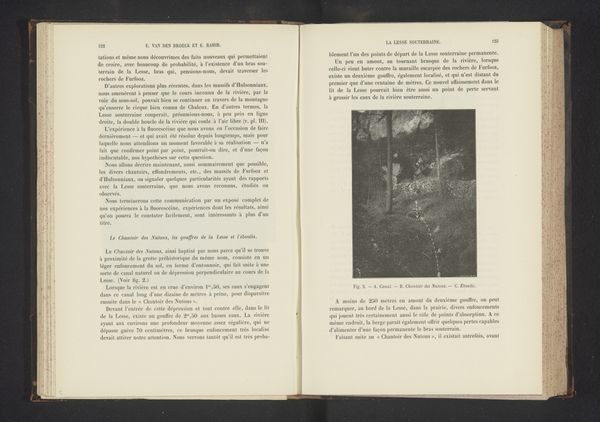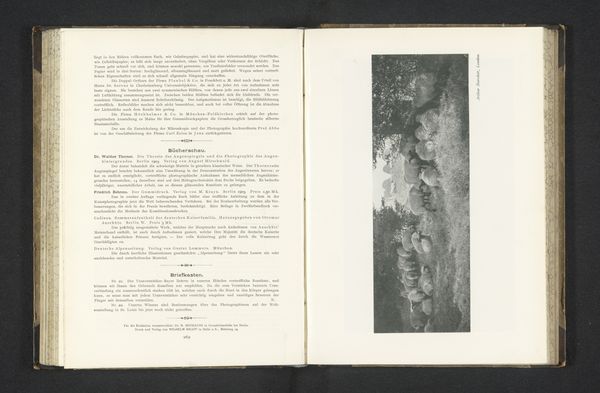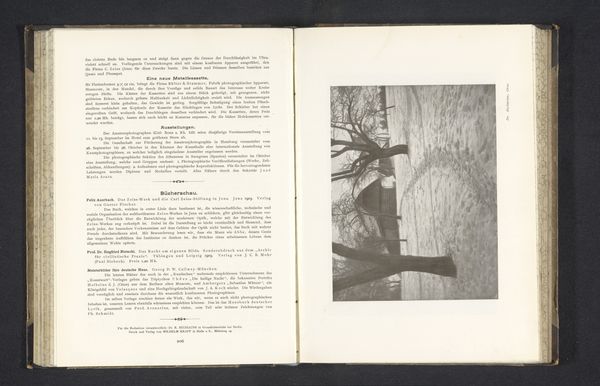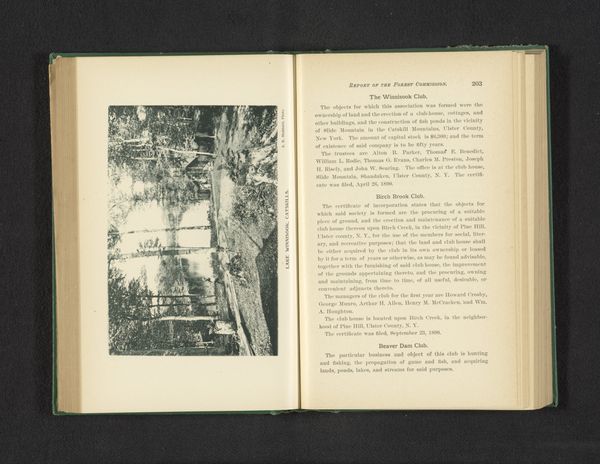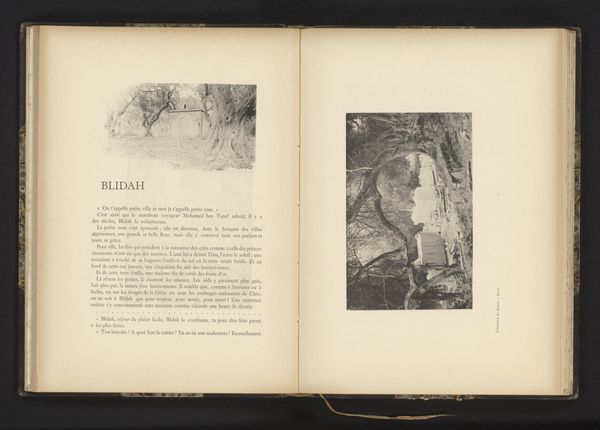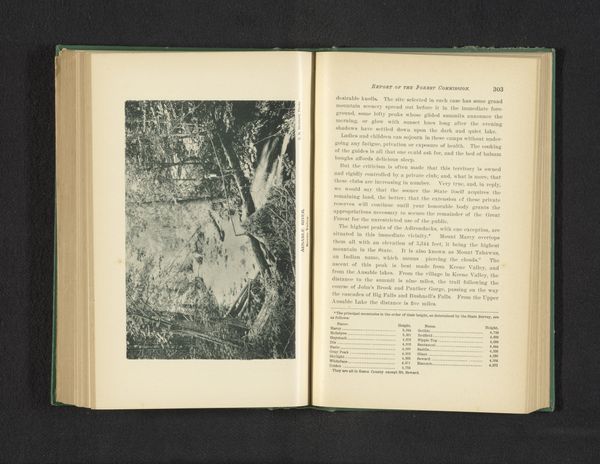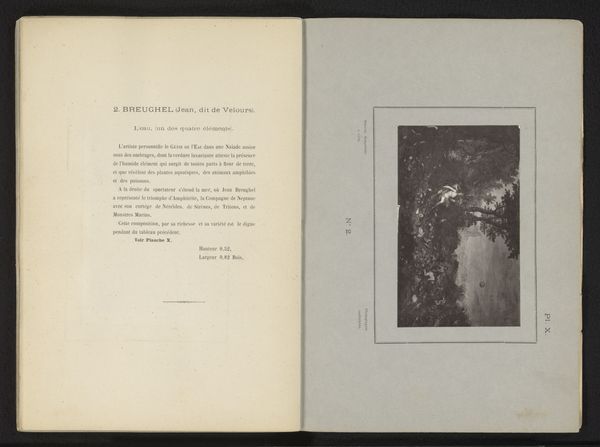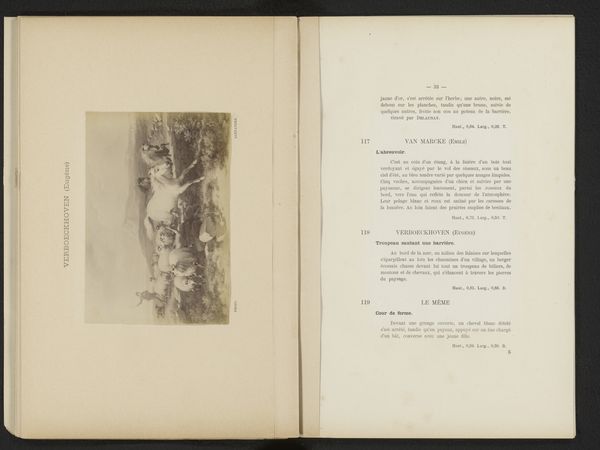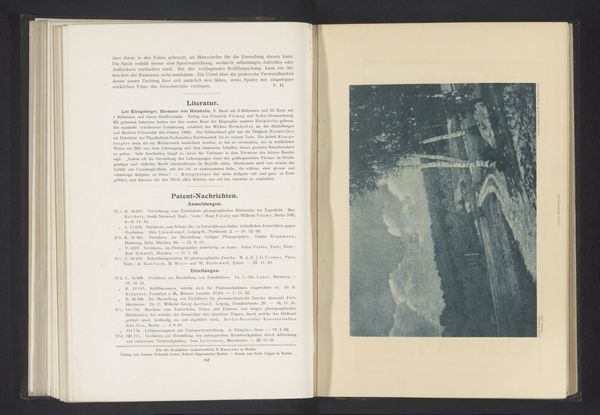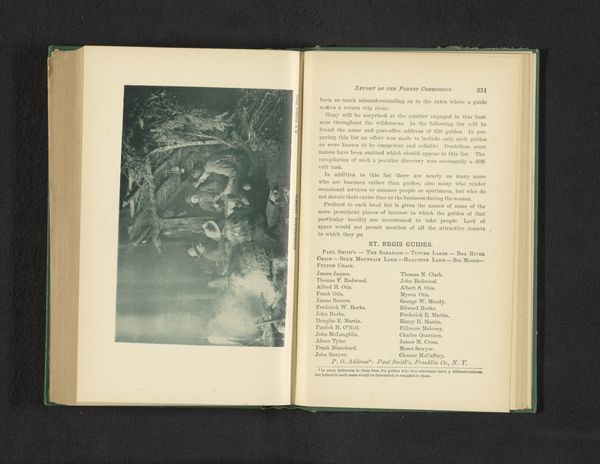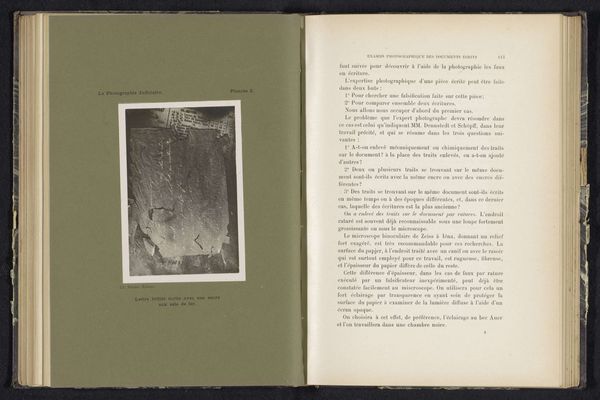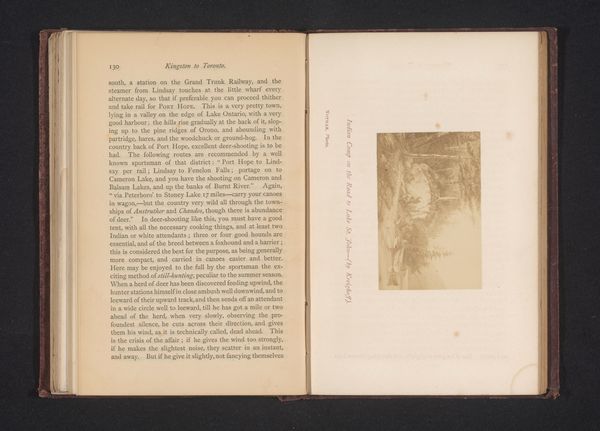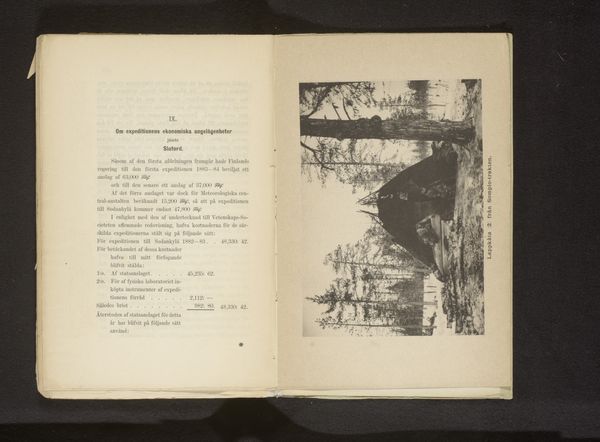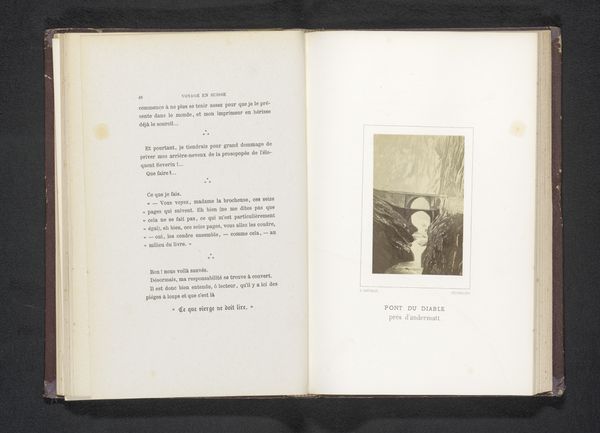
print, paper, photography
#
aged paper
#
homemade paper
#
script typography
#
paperlike
# print
#
sketch book
#
hand drawn type
#
personal journal design
#
paper
#
photography
#
personal sketchbook
#
journal
#
thick font
#
monochrome
Dimensions: height 79 mm, width 119 mm
Copyright: Rijks Museum: Open Domain
Curator: This open book displays, on the right-hand side, a 'Reproductie van een prent met mythologische voorstelling,' dating from before 1900, housed here at the Rijksmuseum. It’s printed on paper. Editor: My first impression is that the monochromatic composition gives it an aura of something aged, with striking tonal variations despite the image quality limitations from this type of photography, particularly on paper. What sort of narrative do you glean from this work? Curator: Considering the visual representation of mythology, which often reinforces dominant cultural narratives, I'm drawn to thinking about how such imagery can both reflect and perpetuate societal values, power structures, and, in some instances, even gendered archetypes. These historical interpretations shaped the modern understanding of social order and identity in their eras, a topic to which many modern-day scholars dedicate their focus. Editor: I can see that perspective. From my vantage, however, the strong verticality—those dominating rock faces, perhaps—really creates a sense of contained, almost oppressive space. Curator: Indeed. Considering its placement within the pages of a book, the print takes on an additional layer of meaning. Perhaps this hints at restricted or prescribed access to these narratives, underscoring how knowledge and interpretations can be controlled and disseminated selectively throughout history, even up to the modern day. Editor: Absolutely. The reproduction loses detail that's found on higher quality prints, creating unique shading, texture, and contrast which lends the scene its ethereal, otherworldly, character, which is essential to understanding the book's intended emotional engagement with the viewer. Curator: Those effects become artifacts themselves of a very specific time and process of photographic reproduction. I wonder, who was it created for, what statements about knowledge and narrative was this image designed to evoke in period audiences? Editor: That leads to interesting considerations when trying to appreciate such an image in contemporary society. Looking closely allows us to trace, materially, the evolution of both mythmaking, artistry, and its effect through time. Curator: An evolution and, undoubtedly, an interpretation of identity in a constantly changing society.
Comments
No comments
Be the first to comment and join the conversation on the ultimate creative platform.
